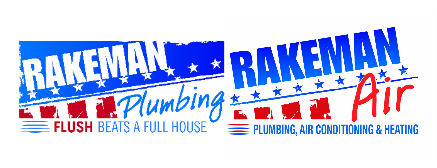After years of renting, you’re excited to move into your own Las Vegas home! You don’t have to worry about landlords, roommates, or noisy upstairs neighbors.
You have your own home where you can do as you please.
However, a home also comes with responsibilities, and one of the most important responsibilities is taking care of the plumbing systems.
If you’ve never had to maintain a plumbing system before, read our checklist below to make sure your plumbing, septic tank, and sewer work smoothly.
10-Step Plumbing Checklist
This Rakeman Plumbing checklist describes the most common areas where plumbing problems occur and what to do if you encounter plumbing problems.
1. Check for leaks.
Small leaks in your shower or faucet often get worse over time. These water leaks can cause costly water damage and waste gallons of water.
To save money on both repairs and your water bill, you should identify and fix leaks as quickly as possible. If it’s not an easy fix? Call Rakeman Plumbing– we’ll provide quality leak repair at an affordable price!
2. Check for corrosion.
Pipe corrosion can cause leaks and bad pipe connections.
To check if your pipes are corroding, look for green stains around the brass and copper fittings and shutoff valves. Yellow or orange stains also indicate corrosion on older steel pipes.
If you spot any corrosion, have a professional Rakeman plumber inspect your plumbing system.
He or she will advise you on the best course of action. If your pipes are corroded beyond repair, your Rakeman Plumbing technician will replace your pipes.
3. Test water pressure.
Let your water faucet run for 10 seconds to test your water pressure.
If you notice that your water pressure is low, you might have a sediment buildup behind your faucet head. It is possible you might also have a problem with the waterline.
Take off the faucet head to check for and remove the sediment buildup yourself, or call a Rakeman plumber if you experience more severe problems!
4. Check drainage speed.
When the water drains in your tub or sink, keep an eye on how fast the water drains. A clear drain has a full swirl when it drains.
If you notice that you have slow water drainage or see bubbles as it drains, you most likely have a clogged drain or a blocked vent pipe.
Contact the experts at Rakeman Plumbing if you are not able to clear your drain yourself.
5. Test toilet parts.
When you flush your toilet, check the flush handle and look inside the toilet tank to see if the flush valve or any other toilet parts are broken, rusted, or missing.
If you experience any problems, such as a running toilet, replace or repair any broken parts.
6. Check cracked tiles.
If you notice cracked tiles around your sink, water pipes, or shower floor, a leak has probably caused the area beneath your tiles to rot.
Remove all the rot beneath the tiles and identify the leak’s source to prevent future damage. If you’re having trouble with that, give Rakeman Plumbing a call.
7. Check caulking.
Inspect the caulking around your toilet, sink, or tub. Moisture or old age could cause the caulking to peel or crack. Check around your caulking for any sources of water leaks and apply new caulking as needed.
8. See if the toilet moves.
Gently try to rock your toilet to see if it moves. A loose toilet can be a sign of a water leak. Be sure to check for leaks and properly caulk the space between the toilet base and the floor.
9. Check inside your water heater’s burner chamber.
Your water heater’s burner chamber should have a blue flame and no flakes of rust. Yellow-colored flames mean that the jets are clogged.
Contact your water heater manufacturer to learn how to clean your water heater’s burner chamber, or get in touch with a Rakeman Plumbing professional.
You should also drain the water in your water heater periodically to remove sediment that may have built up. Consult your owner’s manual or speak with a Rakeman technician for help.
10. Check washing machine hoses.
Make sure your machine hoses are flexible and don’t have any leaks or cracks. When you need to replace your hoses, get braided stainless hoses or another high-pressure material for long-lasting quality.
Use this checklist every few months to make sure your plumbing is in order. A well-maintained plumbing system will help you avoid costly repairs.
2-Step Septic and Sewer Maintenance Checklist
Septic and sewer systems can cause serious problems if they experience a mainline stoppage or sewer backup. Avoid these problems through the regular maintenance outlined below.
1. Schedule an annual septic system inspection.
Have a professional Rakeman plumber or septic tank specialist perform a septic test annually. This will help you know the health of your septic system and let you know when you need to pump.
2. Maintain your sewer main.
Learn how your sewer line functions and schedule regular sewer main snaking to keep your sewer main free of tree roots and other obstacles.
Irregular fixture behavior and clogged drains are typical signs of a clogged sewer main. Schedule septic and sewer maintenance on a regular basis with Rakeman Plumbing to avoid costly backups.
Protect Your Home with Rakeman Plumbing
As you keep up with your plumbing, you’ll be better equipped to fully enjoy your new home. You’ll also save more money since these maintenance tips will help you avoid expensive repairs.
When you do need plumbing repairs, contact your local Rakeman Plumber to get the professional help you need! We’re here 24/7, 365 days of the year for your plumbing needs.


Recent Comments